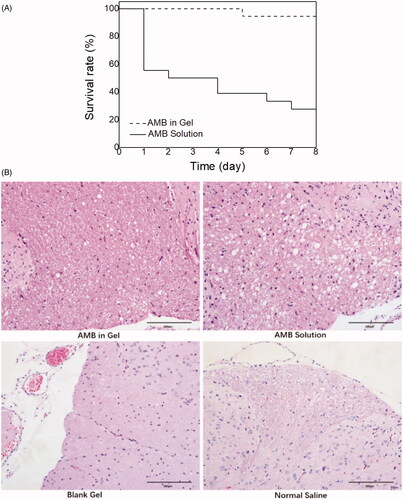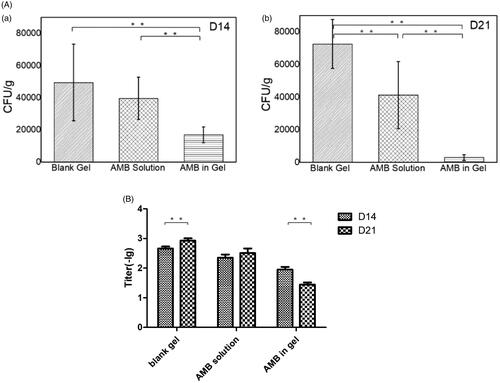Figures & data
Figure 1. Characterization of PLGA–PEG–PLGA triblock copolymer. (A) The structure of PLGA-PEG-PLGA triblock copolymer. (B) The 1H NMR spectrum of PLGA–PEG–PLGA triblock copolymer in CDCl3. (C) GPC spectra of PLGA–PEG–PLGA triblock copolymer.
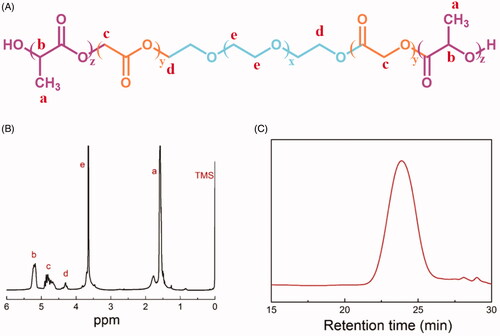
Table 1. Characterization of PLGA–PEG–PLGA triblock copolymer.
Figure 2. Characterization of sol-gel transition. (A) Phase diagram of PLGA–PEG–PLGA triblock copolymer aqueous solution (25 wt%). (B) The storage modulus G′ and loss modulus G″ of copolymer aqueous solution (25 wt%) as a function of temperature. (C) The storage modulus G′ and loss modulus G″ of copolymer aqueous solution (25 wt%) as a function of temperature with different AMB loading. (D) The change of blank gel (above) and AMB in the gel (below) with the temperature rise from room temperature to 37 °C.
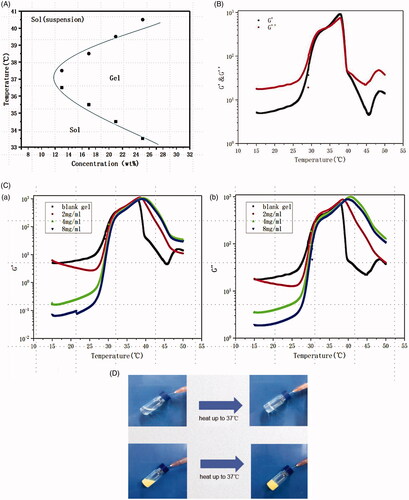
Figure 3. Cumulative release profiles of AMB in gel with specific concentrations in PBS at 37 °C. The concentration of the polymer was kept at 25 wt% (n = 3).
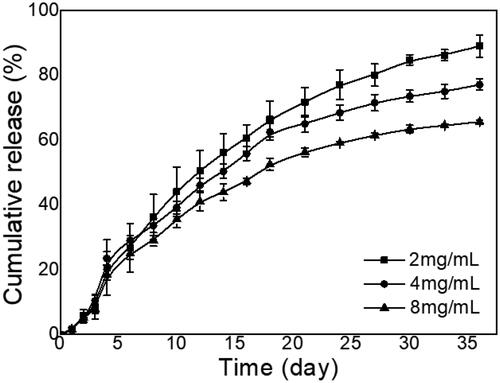
Table 2. First-order kinetic assessment of the in vitro release data.
Table 3. Tarlov’s score within 7 days after intrathecal administration in rats.

